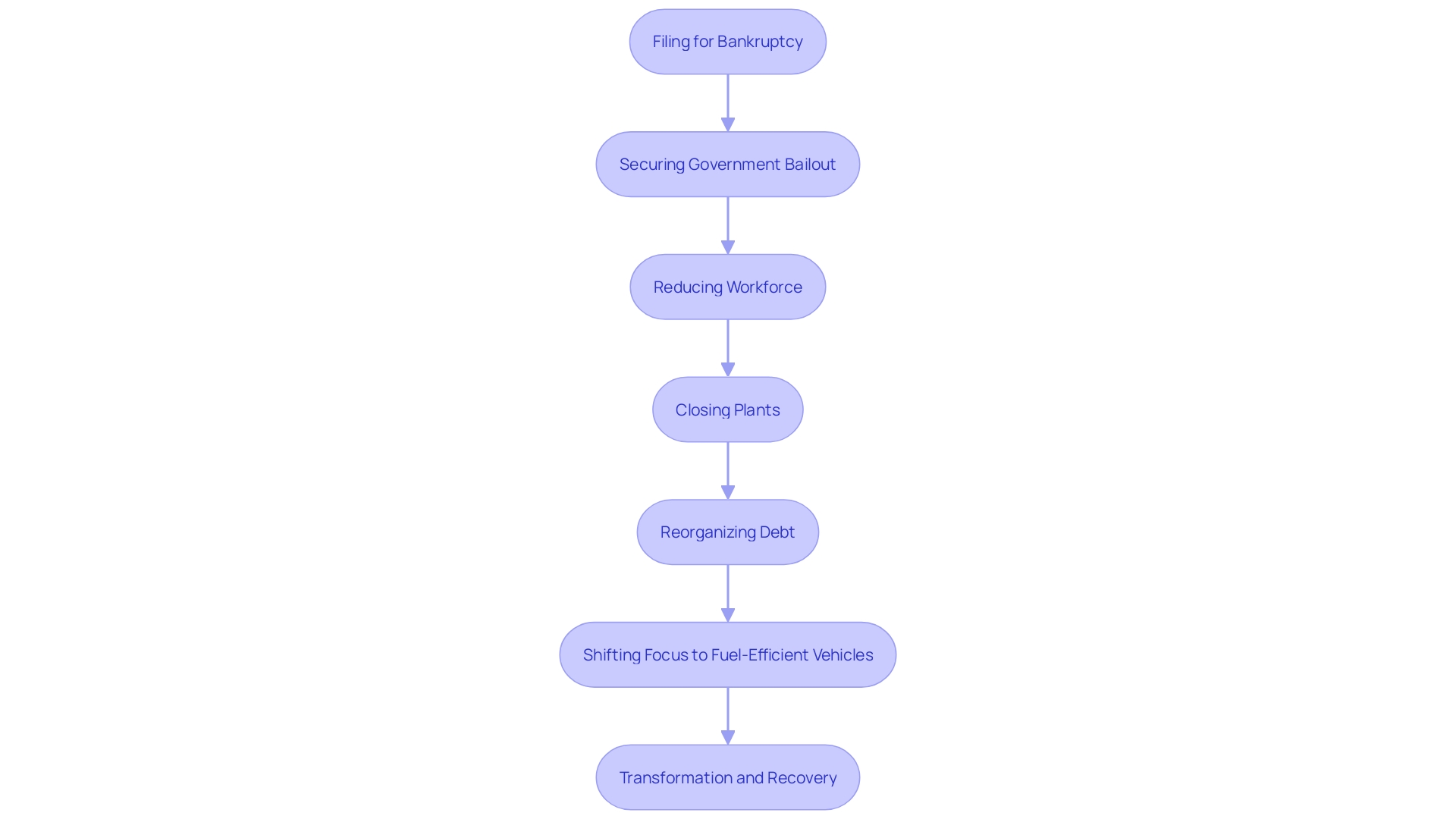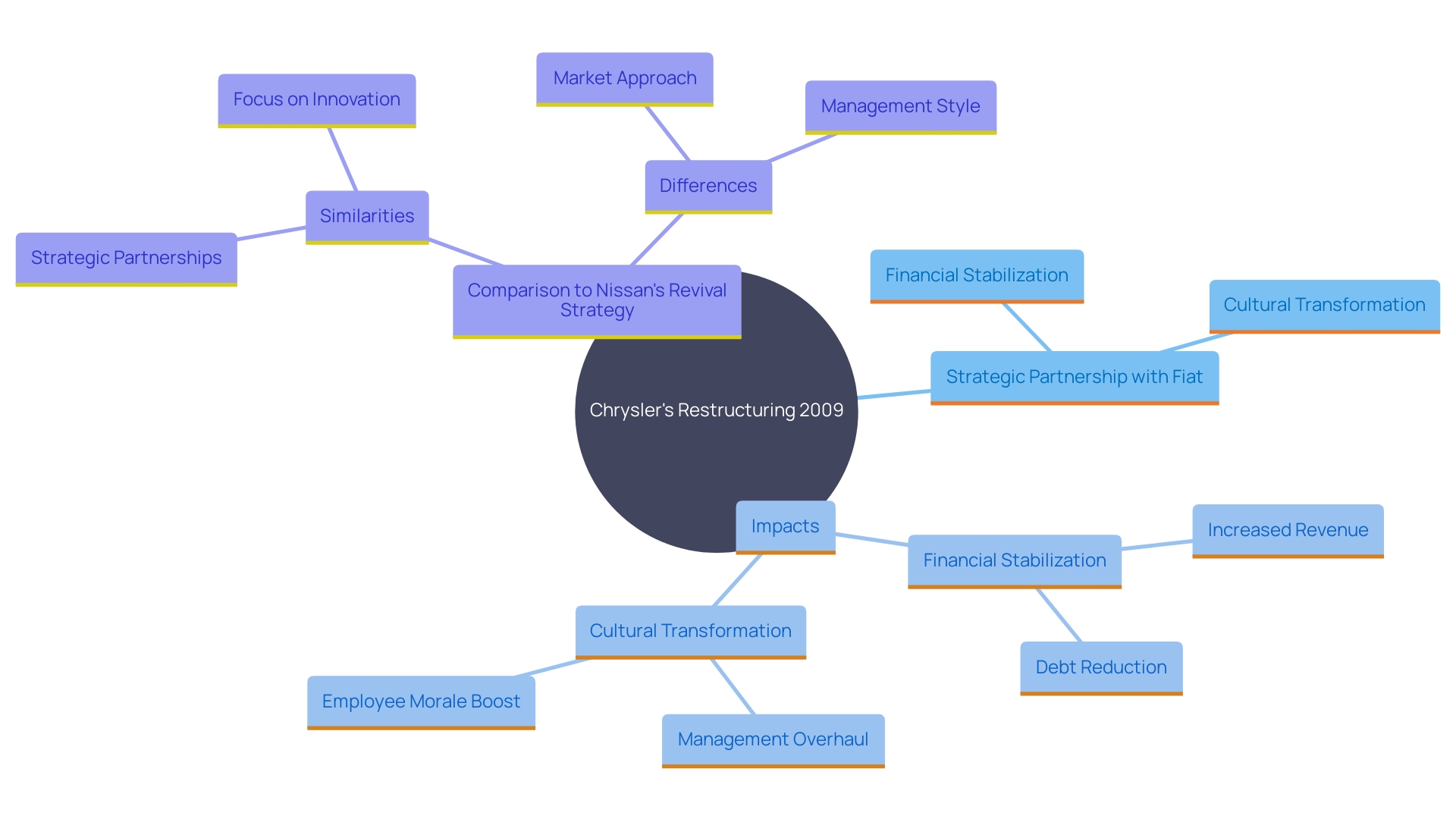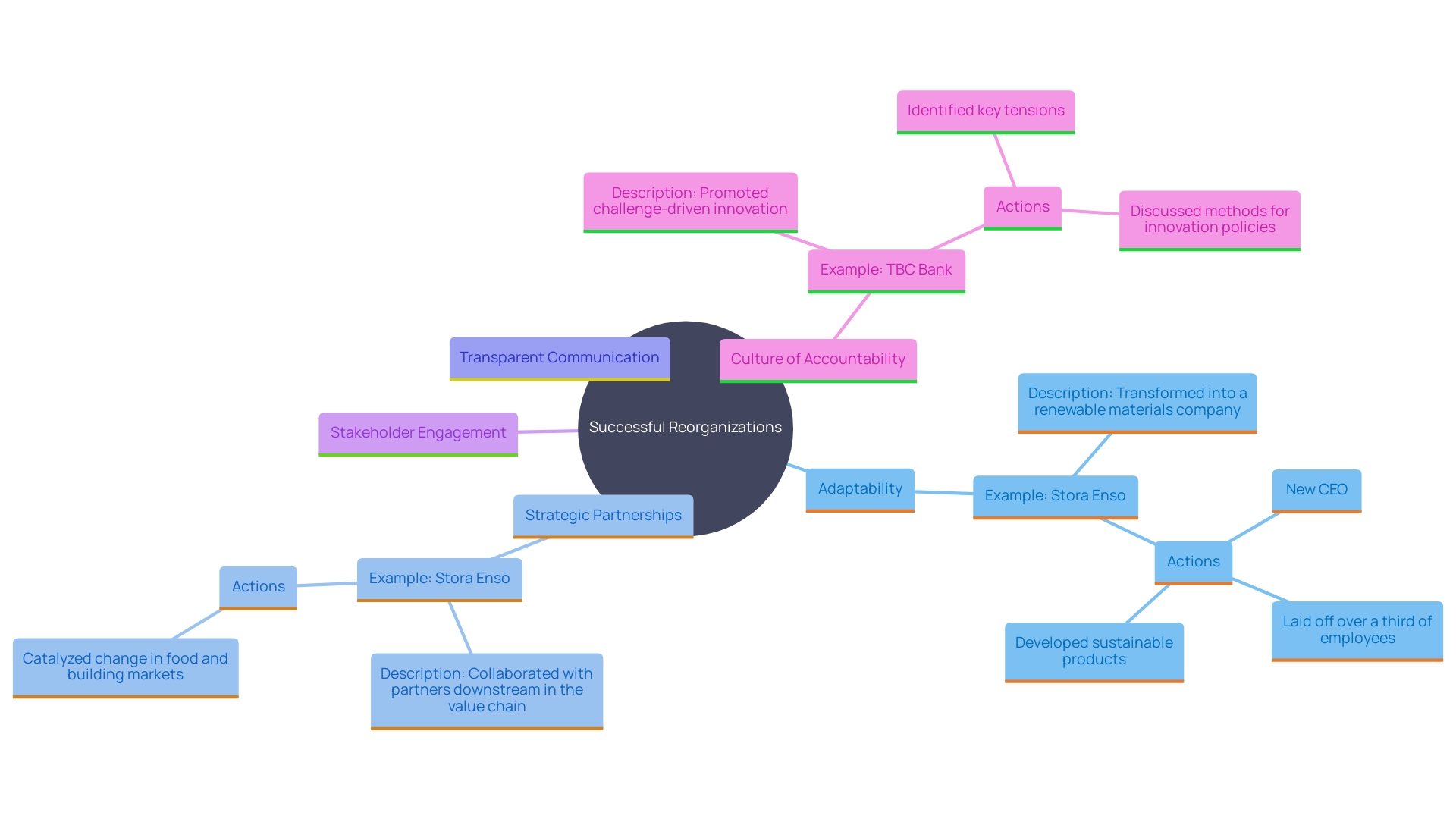Introduction
Navigating the complexities of corporate restructuring requires more than just financial acumen; it demands strategic foresight, operational agility, and robust stakeholder engagement. As organizations face evolving market dynamics and economic pressures, understanding the core components of successful restructuring becomes imperative. This article delves into the essential elements that drive effective restructuring, illustrated through detailed case studies of industry giants like General Motors and Chrysler.
These real-world examples underscore the critical importance of adaptability, strategic alliances, and transparent communication in emerging stronger from financial adversity. By examining these success stories and extracting key lessons, financial leaders can better position their organizations for sustainable growth and resilience in the face of future challenges.
Key Components of Successful Restructuring
Effective reorganization demands an in-depth comprehension of an organization’s financial standing, operational capabilities, and market position. This begins with a thorough evaluation of liabilities, asset valuations, and cash flow projections. Engaging all stakeholders—creditors, employees, and management—is crucial for securing alignment and commitment to the restructuring strategy. Establishing realistic timelines and measurable goals not only helps track progress but also allows for strategic adjustments as required.
A practical example is TBC Bank, which, despite being a leading financial institution in Georgia, continuously aims to enhance efficiency and adapt to changing market conditions. The bank’s emphasis on enhancing time-to-market for digital offerings and providing an outstanding banking experience illustrates the significance of operational agility and stakeholder involvement in successful transformation.
Moreover, forward-looking statements in corporate reorganization highlight the significance of anticipating global macroeconomic conditions, such as inflation and geopolitical conflicts. Companies must be prepared to navigate these challenges while ensuring compliance with regulatory requirements and mitigating cybersecurity risks. This proactive approach is essential for maintaining financial stability and achieving long-term value creation.
Case Study 1: General Motors - Emerging Stronger from Bankruptcy
General Motors (GM) filed for bankruptcy in June 2009 during the economic decline of 2007-2009, which required a comprehensive reorganization plan. Facing severe contraction, GM focused on reducing its workforce and closing unproductive plants. The company secured a substantial government bailout to stabilize operations. By reorganizing its debt and realigning its product lines towards fuel-efficient vehicles, GM managed to navigate through its crisis. Post-bankruptcy, GM emerged with a streamlined operation, a renewed focus on innovation, and a stronger balance sheet. This transformation enabled GM to regain industry leadership and profitability, setting a precedent for successful business crisis management.

Case Study 2: Chrysler - Strategic Alliance for Revival
In 2009, Chrysler's restructuring was significantly enhanced by a strategic partnership with Fiat, enabling Chrysler to access new technologies and sectors. The comprehensive plan involved substantial operational cuts, renegotiation of labor contracts, and the launch of new models. This partnership not only stabilized Chrysler financially but also ushered in a cultural transformation focused on efficiency and innovation. Reflecting on similar industry moves, Nissan's revival under Carlos Ghosn illustrates the importance of making the right products for the right audiences. By investing in a varied array of vehicles and optimizing production to lower expenses and lessen economic risks, Nissan managed to regain its position in the worldwide arena. Chrysler's collaboration with Fiat similarly set the stage for a competitive resurgence in the automotive industry.

Lessons Learned from Successful Restructurings
Successful reorganization instances emphasize the critical importance of adaptability, strategic partnerships, and transparent communication. For example, Stora Enso's bold transformation into a renewable materials company, driven by emerging market trends, highlights the necessity of thorough financial analysis and readiness to pivot strategies based on market feedback. This shift involved reducing a third of its staff and introducing new management, illustrating the difficult yet necessary measures in reorganizing.
Companies should also maintain strong stakeholder engagement throughout the process. According to a McKinsey Global Survey, 66% of successful company reorganizations had developed clear communication plans for all stakeholders, underscoring the importance of transparency. Furthermore, the survey revealed that 38% of employees were distracted during the organizational changes, which can be alleviated through effective communication and engagement.
Emphasizing a culture of accountability and continuous improvement is crucial. TBC Bank's transformation from complex operations to flexible, continuous delivery of value illustrates how a strategic focus on improving time-to-market for digital products can enhance customer and employee experiences. This approach aligns with Joan Beets' assertion that 'change is the only constant in life – and in business,' highlighting the need for resilience and adaptability in successful restructuring.

Conclusion
Navigating the complexities of corporate restructuring requires a multifaceted approach that prioritizes financial health, operational efficiency, and stakeholder collaboration. Understanding an organization’s financial standing and market position is vital, as is engaging all stakeholders to ensure alignment and commitment to the restructuring plan. Realistic timelines and measurable goals facilitate progress tracking and allow for timely strategic adjustments, as demonstrated by TBC Bank's emphasis on operational agility and market responsiveness.
The case studies of General Motors and Chrysler serve as powerful examples of successful restructuring. GM's strategic focus on innovation and product alignment post-bankruptcy illustrates the potential for revitalization through adaptive strategies. Similarly, Chrysler's alliance with Fiat highlights the importance of strategic partnerships in navigating financial challenges and fostering cultural transformation.
These examples reinforce the idea that resilience and adaptability are not merely beneficial but essential for long-term success.
The lessons gleaned from these restructuring efforts emphasize the necessity of transparency and accountability throughout the process. Effective communication with stakeholders can significantly reduce distractions and maintain focus, as shown in the McKinsey Global Survey findings. Companies must also be prepared to pivot based on market feedback, as evidenced by Stora Enso's transformation into a renewable materials leader.
Ultimately, successful restructuring is not a one-time event but an ongoing commitment to continuous improvement and strategic adaptability. Organizations that embrace these principles are better positioned to not only survive economic uncertainties but also thrive in an ever-evolving business landscape.




